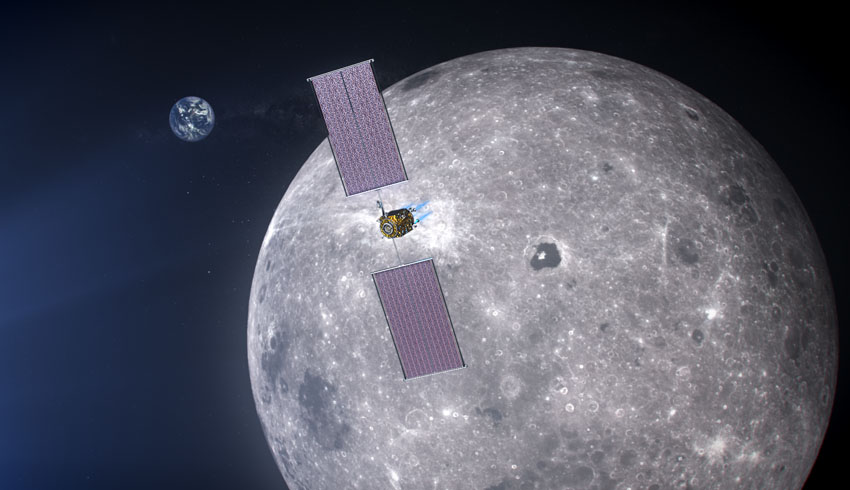
Unlike the Apollo command module, this would be a permanent facility, providing accommodation, power and laboratory space.
This would also give the US a significant first foothold in cislunar space, regarded as the new strategic space high ground.
The US administration’s decision to speed up the return to the moon has meant development of Gateway has also needed to escalate.
What’s planned for the initial Artemis mission is much less elaborate than initially envisaged and will comprise just two modules, a Power and Propulsion Element (PPE) and Habitation and Logistics Outpost (HALO).
As initially planned, HALO remains a collaboration with commercial and international partners, including Canada, Japan, Europe and Russia all planning to contribute.
NASA officials reported good progress on Gateway development at the recent American Astronautical Society Wernher von Braun Memorial Symposium.
NASA selected US space technology firm Maxar Technologies in May to develop the PPE, which will be based on the company’s 1300-series commercial satellite bus and will provide power for the Gateway and electrical propulsion.
The PPE is on schedule for a launch in late 2022 aboard a commercial rocket, followed by a year-long checkout period.
NASA Gateway program manager Dan Hartman told the conference that NASA and Maxar were now working through the integration of a commercial spacecraft with NASA hardware.
Once in orbit, the PPE will also serve as a platform for other payloads. It features a pair of refueling ports. Hartman said the Europeans were very interested in launching a refueler.
“And so we think we can maintain a PPE with the hydrazine and xenon to keep it up and active for a very long time,” he said.
Then there’s HALO. In July, NASA announced it planned to award a sole source contract to Northrop Grumman as it was the only company able to complete development in time for a human moon landing in 2024.
HALO will be based on the company’s Cygnus spacecraft used to deliver cargo to the International Space Station (ISS).
While Northrop Grumman is still negotiating the formal contract, it has been given authority to get started on the more urgent HALO-related requirements.
It’s scheduled for launch in late 2023, also aboard a commercial rocket, docking autonomously with the PPE. Aboard HALO will be a tonne of cargo to support the moon landing.
Other cargo deliveries will be aboard commercial spacecraft under the Gateway Logistics Services program, based on the ISS cargo program.
Receive the latest developments and updates on Australia’s space industry direct to your inbox. Subscribe today to Space Connect here.









